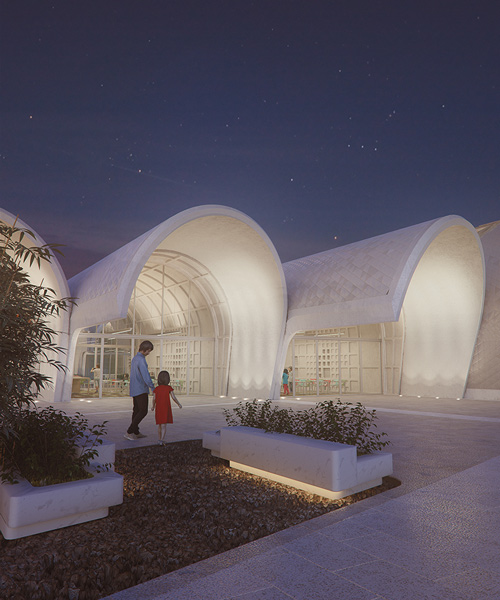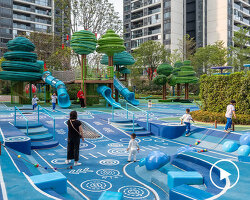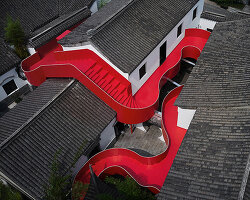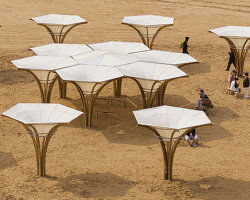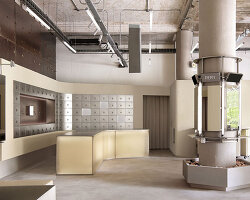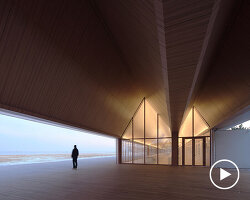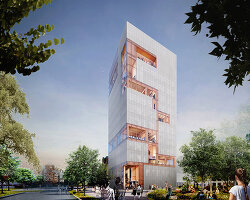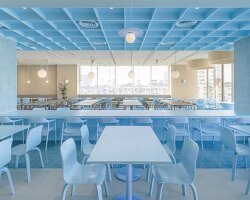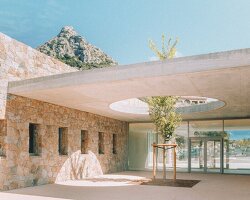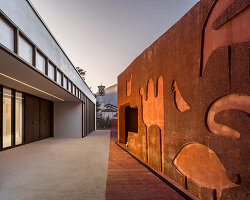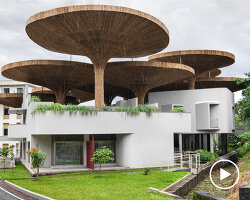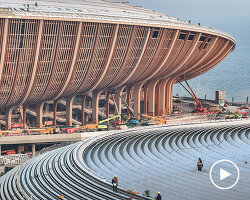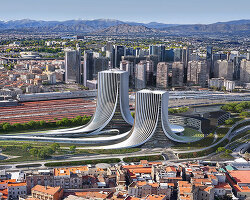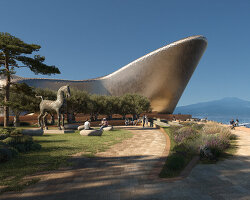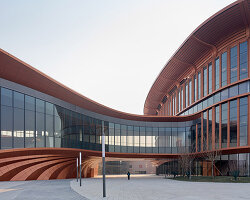designed by zaha hadid architects, ‘lushan primary school’ will be an educational institute for 120 children located 160 kilometers north-west of nanchang, the capital of china’s jiangxi province. the facility will serve 12 local villages with a total population of about 1,800 people. surrounded by mountains, as well as the rivers and lakes fed by the zhelin reservoir, the school is within an agricultural region that also has a rich tradition in the production of ceramics.
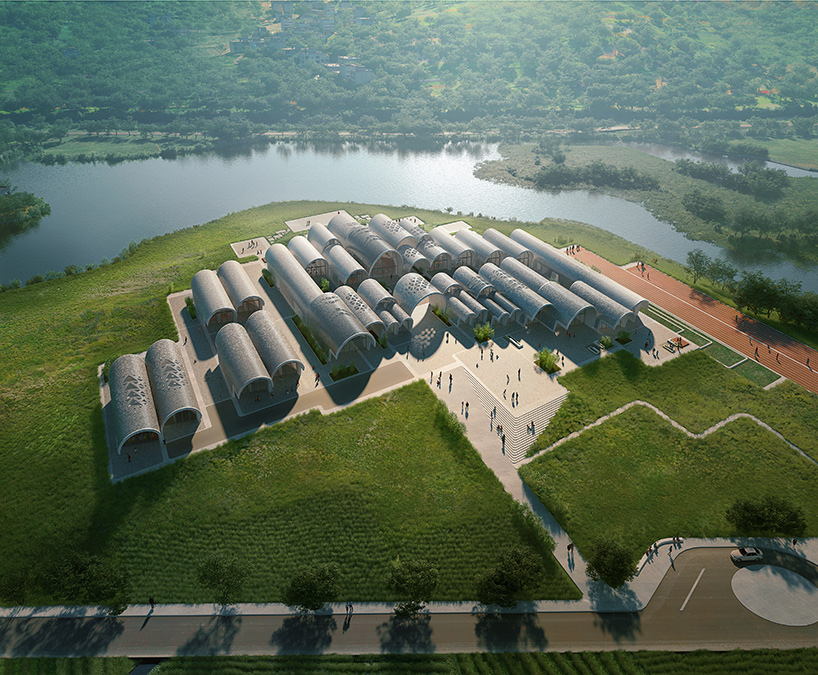
the site is located on a small peninsula surrounded on three sides by water
image by VA (also main image)
the campus, which has been masterplanned by zaha hadid architects, includes the school, dormitory, and utility buildings within vaulted spaces that connect directly with their rural surroundings. the classrooms comprise flexible learning arrangements and outdoor teaching areas. composed as a network of barrel and parabolic vaults that open towards the river, the volumes stretch and intersect to accommodate the school’s varied program. a long central courtyard acts as the school’s main circulation space and play area.
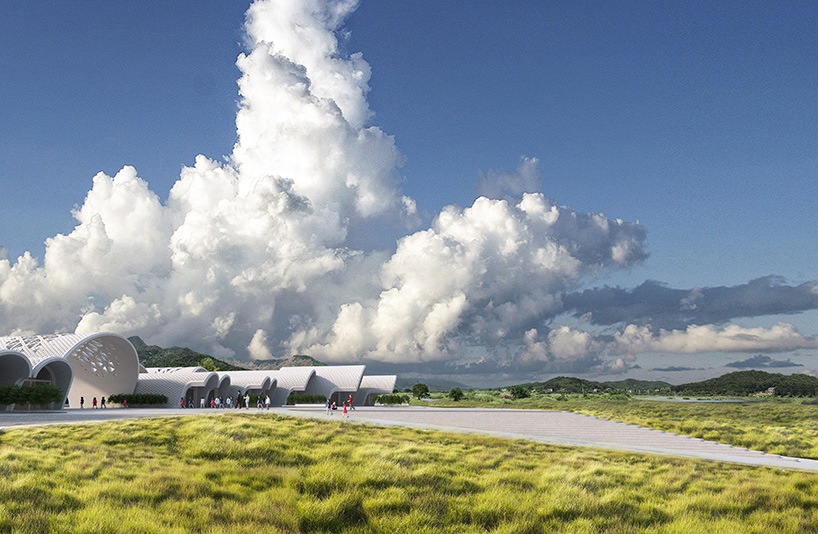
the plot borders farmland to the north
image courtesy of ZHA
‘the vaulted classrooms are orientated for the best natural light conditions, as well as to frame views to the surrounding landscape,’ explains ZHA. ‘cantilevers protect the classrooms from the solar gain of jiangxi’s sub-tropical climate and extend the teaching spaces into the landscape to provide a varied and interactive learning environment. the barrel and parabolic vaults act as the school’s primary structure and enclosure, with each vault performing as an individual structural element.’
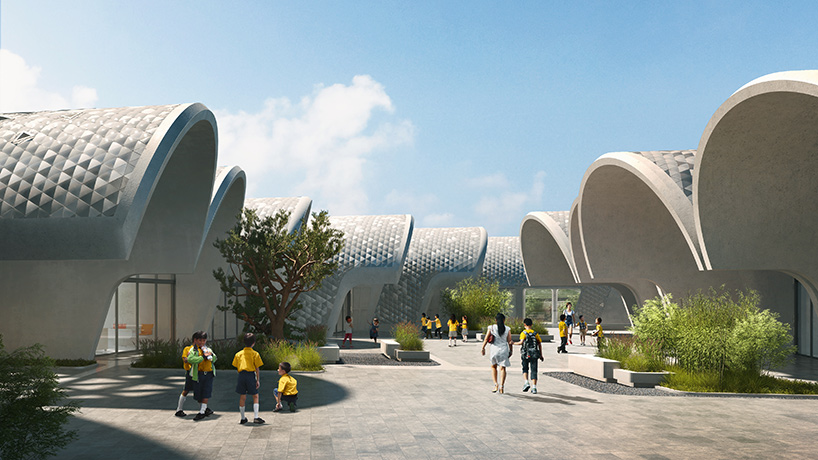
the school is on an elevated escarpment five metres above the 50-year flood level
image by VA
to reduce construction time to a minimum, ZHA proposes to combine the local skills of in-situ concrete construction with new advancements in hot-wire cut foam formwork that can be prepared on site by an industrial robot to create the barrel and parabolic shaped molds. this will also reduce the number of separate building elements required to be transported to the school’s remote location. the modularity of the vaults enables molds to be used multiple times, further accelerating the construction process and reducing costs.
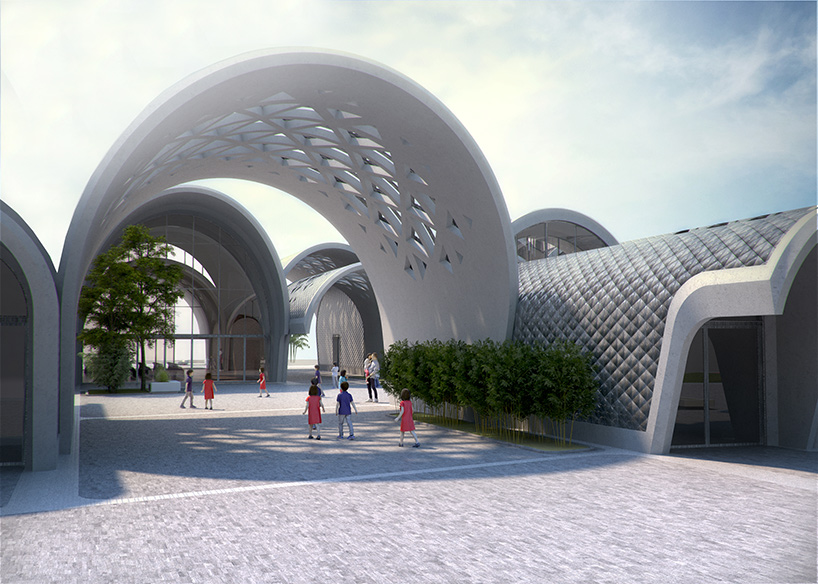
greenery is incorporated within the school’s courtyards
image courtesy of ZHA

the main hall can be used for a variety of events
image courtesy of ZHA
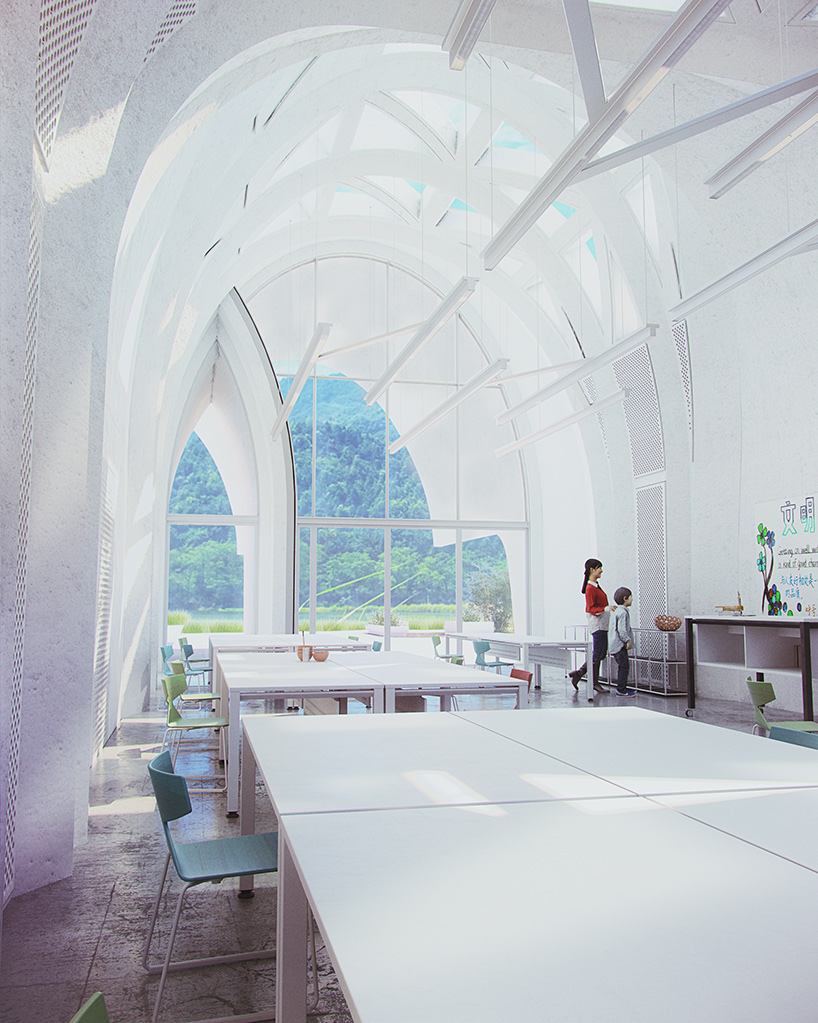
the classrooms comprise flexible learning arrangements and outdoor teaching areas
image courtesy of ZHA
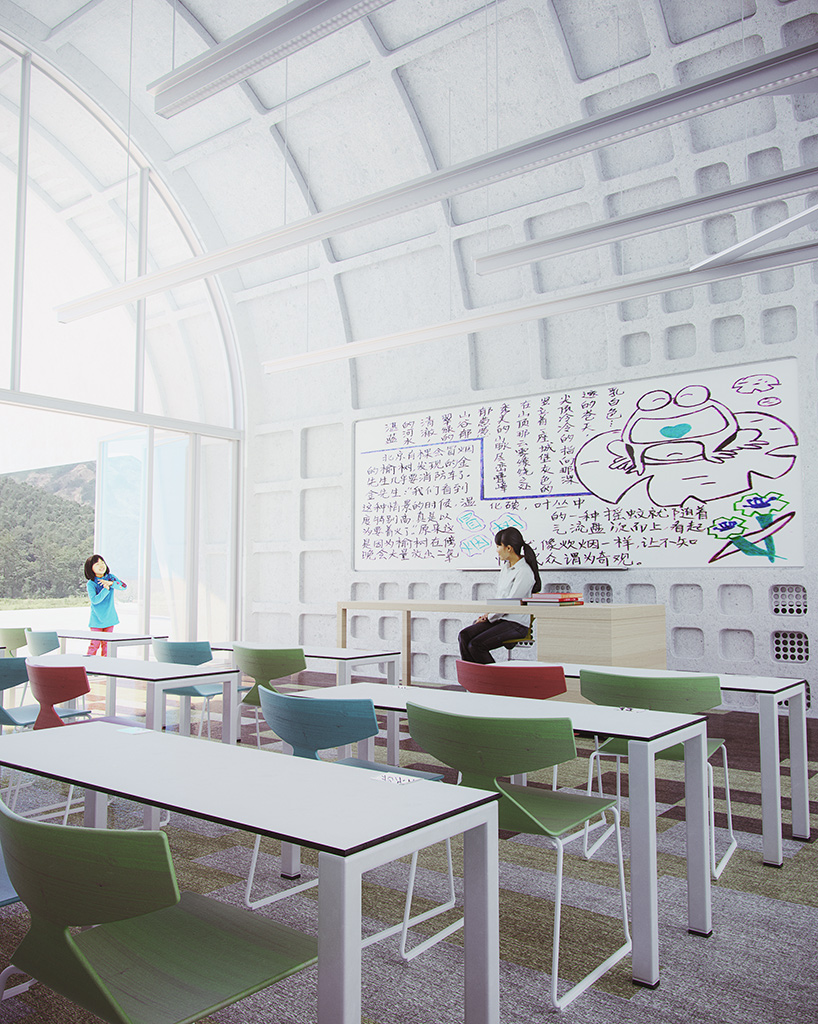
teaching spaces are brightly illuminated throughout
image courtesy of ZHA
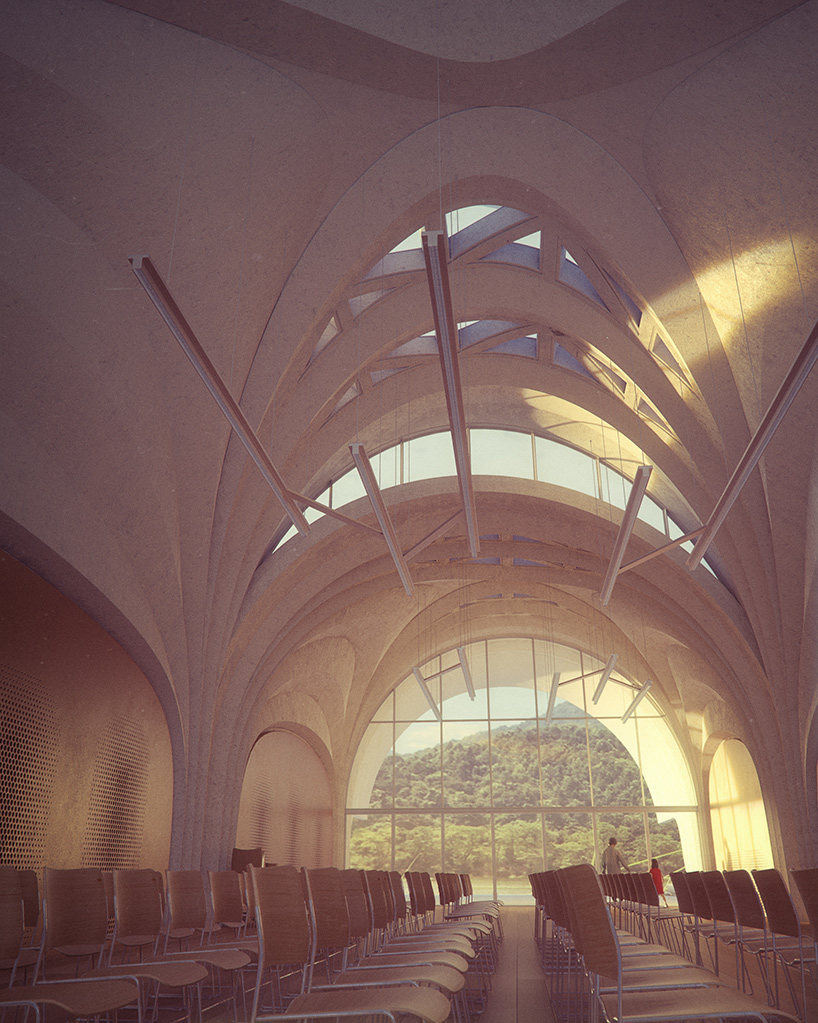
views are presented of the surrounding landscape
image courtesy of ZHA
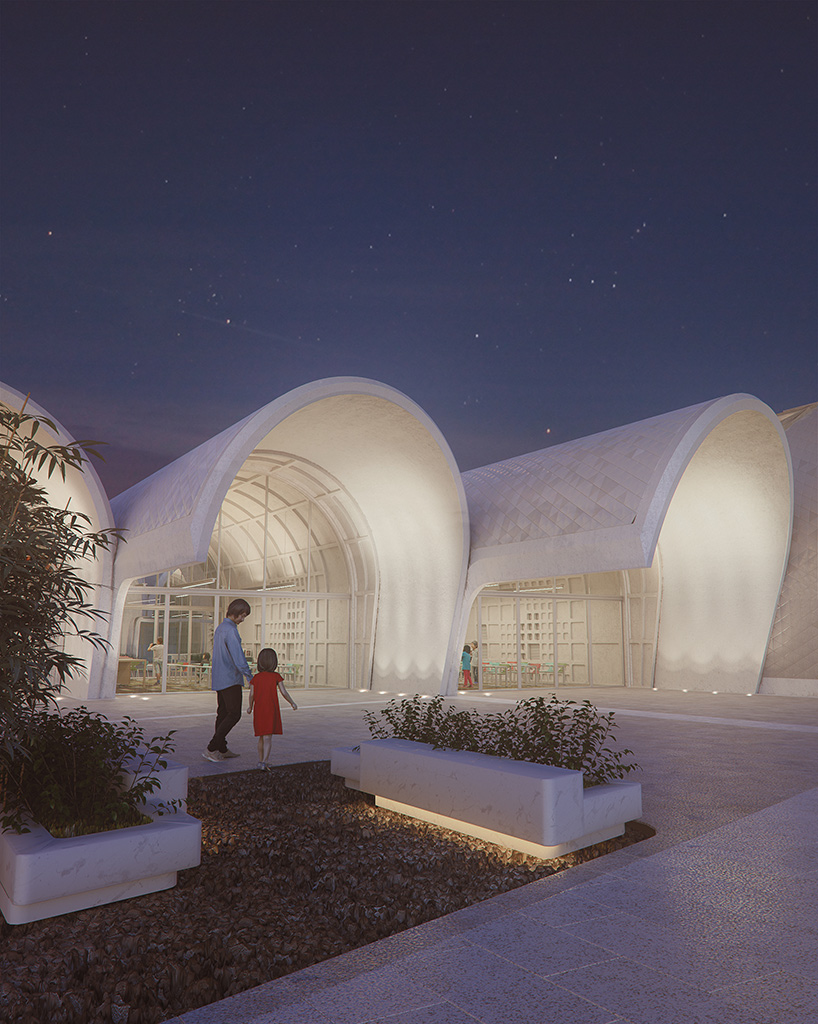
the school’s ceramic external finishes are laid in a gradient of tones
image courtesy of ZHA
robotic hot wire cutting cell | video courtesy of odico formwork robotics
bridge construction | video courtesy of odico formwork robotics
project info:
architect: zaha hadid architects
design: patrik schumacher
ZHA project director: charles walker, nils fischer
ZHA project architect: michal wojtkiewicz
ZHA project associate: armando solano
ZHA project team: nassim eshaghi, nastasja mitrovic, marko margeta, hung-da chien
engineering: shing and partners design group (SPDG)
